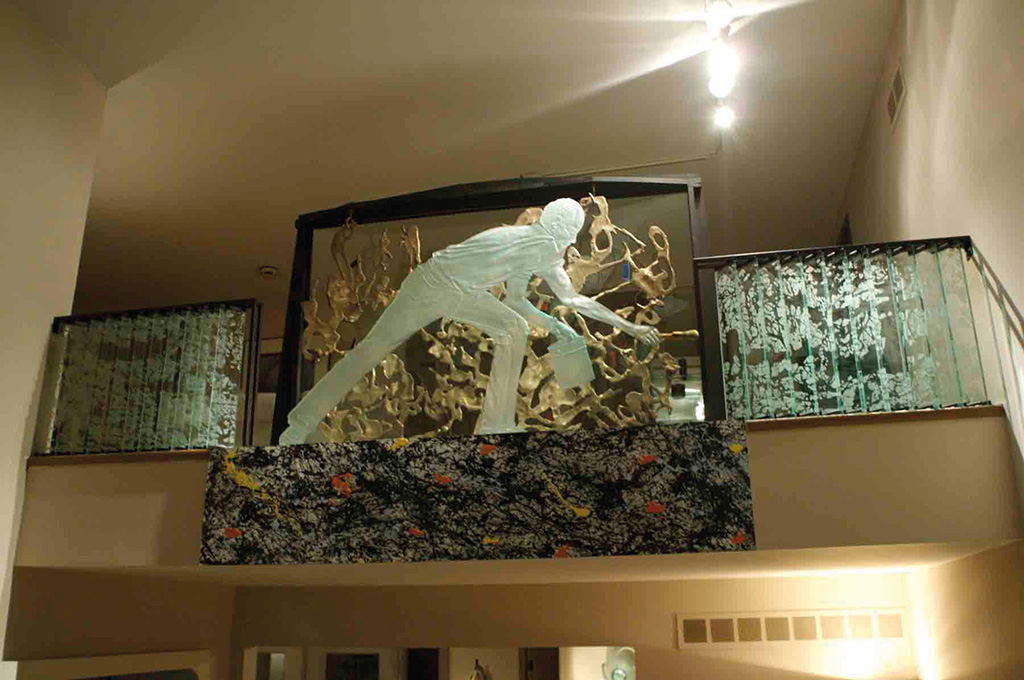Jackson Pollock Number 29
Materials Sandblasted glass with colored glass, bronze, wood
Collection Kathy and Ferd Hampson, West Bloomfield, Michigan
The painting behind the sculpture. In 1950 Jackson Pollock created a painting on glass for a film by Hans Nemouth. In a primitive fashion they dug a pit outside Pollock’s Long Island studio the photographer climbed in with his camera and they laid a sheet of glass over him. The first attempt was unsuccessful as a painting and the second, a mixture of wire mesh and strips of color along with the dripping and splashing of black paint became the painting “Number 29” which is now in the National Gallery of Canada. In order to make the sculpture I took a photo of the painting blew it up to full size and made a calque copy of the black painted areas which I transferred to s sheet of masonite. I then drilled thousands of small holes in the spaces where there was paint. I took this sheet to the foundry where I prepared a sand bed laid out the sheet of masonite and with a sock filled pith plaster tapped on the holes transferring the pattern to the sand. Then with a soup spoon I dug out shallow rivulets. When this was finished we ever so slowly poured bronze into the open form. The wire mesh shapes were sandblasted into a separate sheet of glass to which I added pieces of colored glass. I then added the life size figure of Pollock painting.
The sculpture is meant to be seen from both sides.
From one side Pollock dominates the painting and from the other it’s the painting that moves the artist along.

